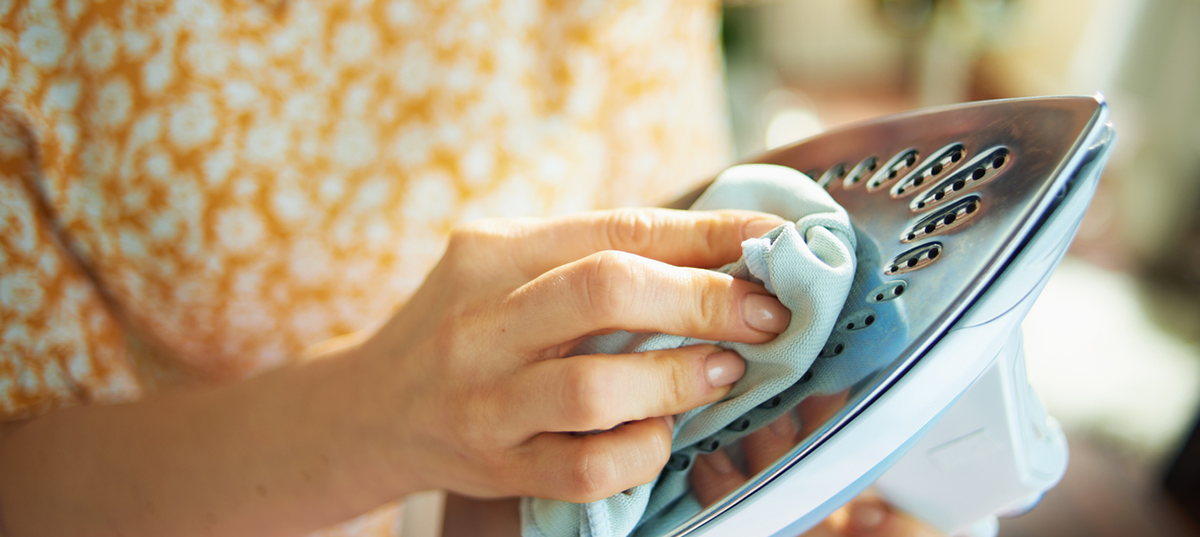Clean Irons Work Better and Last Longer

June 2023
If there’s one small appliance that everyone at South and Hickory Place keeps in their apartment it’s a clothes iron. Your trusty iron works hard to rid your clothes of wrinkles and keep them looking sharp. But did you know that your iron needs a little TLC too? Over time, residue and mineral deposits can build up on the soleplate, and excess moisture in the water tank can lead to mildew. This can affect your iron’s performance or, worst-case scenario, cause burns on your garments. The good news is that all that can be avoided by regularly cleaning your iron.
First things first, how often you clean your iron depends on how frequently you use it. If you’re an everyday iron user, it’s recommended to clean it at least once a month. If you only use it occasionally, aim for a good deep clean a couple of times a year.
Here’s what you’ll need to clean your iron:
- Baking soda
- Cotton swabs
- Distilled water
Now, let’s dive into the cleaning process:
- To tackle the vents and soleplate, create a homemade iron cleaner by mixing baking soda and water in a 2:1 ratio to make a paste.
- Apply the paste to the areas of the soleplate with heavy mineral deposits and wipe it off with a damp cloth.
- Take cotton swabs and dip them in distilled water. Carefully insert the swabs into the steam vents to clean them.
- Empty any water from the reservoir and refill it a mixture of 1/4 cup white vinegar and 3/4 cup distilled water.
- Set your iron to the highest steam setting and let it run.
- Gently move the iron back and forth over a bowl. The water and steam will flush out any scale or dust through the soleplate.
- Once the water reservoir is empty, you can pat yourself on the back – your iron is now clean and ready to go!
To keep your iron in tip-top shape, there are three more things you can do. First, always follow the fabric care instructions and avoid using excessively high heat settings. Next, after each use, allow your iron to cool down and then wipe down the exterior with a microfiber cloth to keep it clean and shiny.
And most important, it’s crucial to empty the water reservoir at the end of every ironing session to prevent moisture buildup that can lead to mold. When you’re ready for your next ironing session, fill the reservoir with fresh water.
Following these simple steps will help your iron stay in great condition and keep you looking sharp. Happy ironing!
